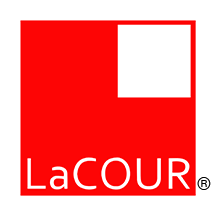Why Judge a Furniture Brand by Its Edges and Finishes
- John Kowalski

- May 28
- 2 min read

When evaluating furniture for a commercial workspace, conversations often revolve around big-picture priorities: spatial fit, functional requirements, and brand alignment. However, seasoned designers and facility managers know long-term satisfaction usually
hinges on something smaller — edges and finishes.
The Details That Define Quality
Edges and finishes might seem like minor elements, but they’re the first—and often the most frequent—points of contact in a workspace. These “touchpoints” speak volumes about the thought and care that went into manufacturing.

Here’s why they matter:
Daily wear and tear: Edges take the brunt of physical interaction—arms resting, devices sliding, chairs bumping.
Visual continuity: A mismatch in finish tone, texture, or sheen disrupts the design’s cohesion and polish.
Tactile experience: Rough edges or synthetic-feeling surfaces can cheapen the user’s experience and reduce satisfaction.
Durability signal: Chipped laminate or poorly adhered edge bands are early indicators of long-term failure.
In short, if the details are overlooked, how can you trust the rest?
What Edges and Finishes Reveal
Edges and finishes are where manufacturing meets intention. They represent the last step in production but are often the first sign of how a brand values quality. When corners are cut here, it reflects a broader lack of precision and care.
At LaCOUR, we believe details aren’t decorative—they’re decisive.
Our Approach at LaCOUR
Because LaCOUR products are built for high-use environments and tailored to demanding design visions, we take a different approach:

Engineered edge profiles designed for longevity, safety, and clean aesthetics.
Curated finishes that align with modern material trends and performance standards.
Custom color-matching is available to maintain brand consistency across every surface.
Hands-on quality control throughout the manufacturing process—not just at the end.
Because we manufacture locally in the New York area, we’re able to offer fast, flexible adaptations for unique project needs—whether that means a matte finish to reduce glare in a C-suite or a reinforced edge for high-traffic touchdown spaces.
In the End, Details Are the Difference
Edges and finishes may seem trivial at first glance. But they’re what your teams and clients will see, touch, and experience every day. When they’re thoughtfully executed, they quietly elevate the entire environment. When they’re not, they undermine the investment.
That’s why I judge a furniture brand by its edges and finishes. You should, too.
Explore how LaCOUR approaches materials and finishes with the same care and intention we bring to every project: lacourinc.com/materials-finishes.




Comments